Rust on pine: what happens, why does it appear and how to deal with it?
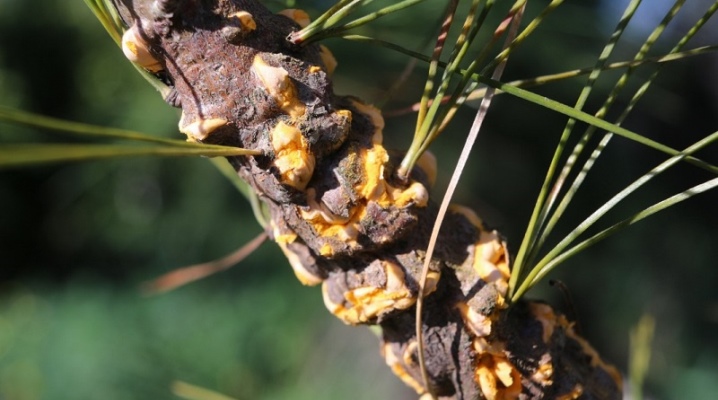
Rust is an infectious disease that affects many plants. Fruit trees, herbaceous, berry crops, ornamental flora - everyone can fall, struck down by this misfortune. Conifers also suffer from rust. Each species has its own characteristics of the flow. In pine trees, the disease affects the bark and needles, slowly but surely destroying the tree.
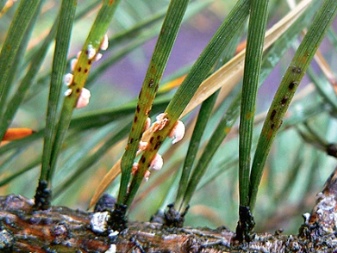
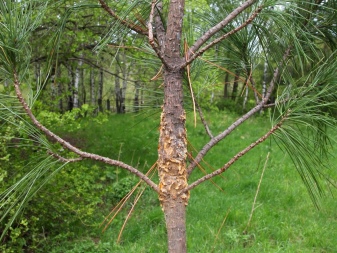
Varieties of the disease
The disease is provoked by rust fungi belonging to the class of teliomycetes. The parasite goes through several stages of development, during which thickenings appear on various parts of the plant. These are spore-bearing formations containing spores close to rusty color: orange, yellow-brown, brown. This is why the disease got its name.
At the same time, up to several billion spores mature on one plant. They are transported at lightning speed through the air, overcoming huge distances, which are measured by the scale of the continents. Rust has the most intricate development cycle of all fungi. A large number of pathogens of the disease are of different owners, that is, in the process of maturation, several hosts are replaced.
The main host is the plant on which the parasite resides for most of the cycle. The intermediate host becomes a transit point where the fungus passes through a certain stage of development. Each species of pine rust has its own intermediate host. Some rust fungi dispense with a staging post.
Among the species of pine rust, pine blister rust or rust crayfish caused by the genus Cronartium ribicola is widely known. The disease initially affects the needles of a tree, forming yellow spots on it. Then the infection spreads to young shoots. And from the young - on the branches, the trunk. In the trunk, the fungi destroy the resin passages, which is why the resin begins to flow out profusely. As a result, characteristic yellow-orange resin clots are formed on the outside on the bark. With the progression of the disease, non-healing wounds appear, from which resin systematically flows out. In this case, currants and gooseberries become the intermediate host for the pine. They infect the plant in the fall, when spores from their fallen infected leaves migrate to pine needles.
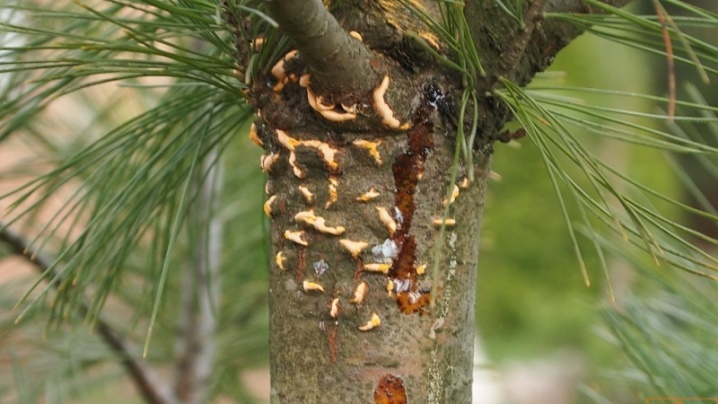
In spring, mushroom spore-bearing boxes are formed on the pine in the form of yellow or orange bubbles. As they mature, many spores spread to intermediate hosts, where the cycle repeats again. Rust crayfish most often affects Weymouth pine and cedar pine. The disease destroys the tree above the lesion site. Thus, the higher the affected area is, the more likely it is to preserve the plant. If resin wounds form in the lower part of the trunk, the culture dries up very quickly.
Pine needle rust is caused by fungi of the genus Coleosporium. In the course of the pathological process, spore-bearing vesicles ripen on pine needles at the beginning of the summer period. In the middle of the season, spores emerge from them, which, scattering, attack the intermediate owner - mother-and-stepmother, wildflower, bell, sow thistle. Spore-bearing vesicles leave brown traces on the pine needles, which makes the tree variegated. In the spring, the needles are re-infected.
Pine vertiginous or rusty lesions of pine shoots are the result of the parasitism of Melampsora pinitorqua. Its activity is manifested in late spring, when young shoots are covered with yellow blisters, bending S-shaped. The tops of the shoots die off.
After this, the foliage of the white poplar and aspen, the intermediate hosts of the fungus, is covered with orange urediniopustules, turning into black teliopustules. In this form, the parasite hibernates on fallen dry leaves. In the spring, a specific golden bloom appears on them, which re-infects the pine when it spreads. As a result of damage, the tree rarely dies, but it can be very distorted.
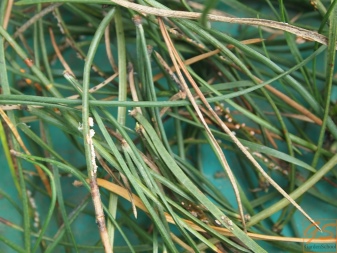
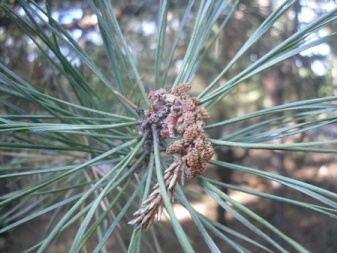
The main reasons for the appearance
The provoking factor for the appearance of rust on a pine tree can be the immediate vicinity of the tree with the intermediate host of the parasite. Planting these crops next to each other, such as pine and currant, increases the likelihood of spores on both plants. If you doubt the correctness of planting crops, you can contact a dendrologist. The specialist will tell you about the rules for the layout of planting material, about the favorable conditions for development.
Another reason is the planting of already infected crops. In nurseries surrounded by plantations of gooseberries and currants within a radius of less than 300 m, trees are often attacked by rust fungi. By purchasing a plant there and planting it on your site, you thus get an initially diseased specimen. Increased humidity contributes to the flourishing of the disease. Therefore, an unreliable drainage system becomes an excellent breeding ground for fungi.
Will provoke the growth of parasites and untimely treatment of plantings with antiparasitic agents.
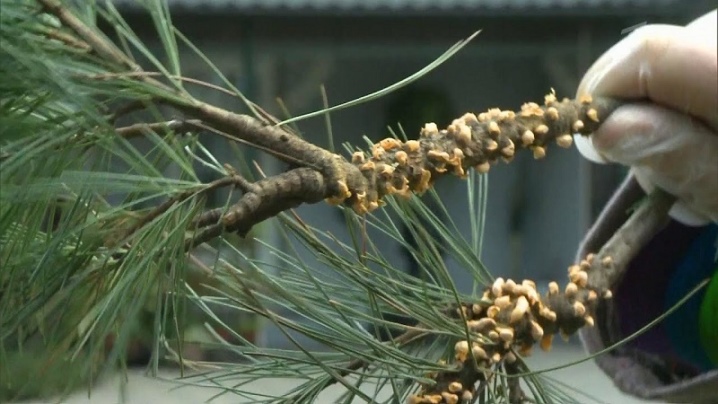
How to fight?
If traces of rust are found on the plantations, one should proceed with its immediate elimination and treatment of the affected crops. Among the methods of combating rust fungi are:
- removal of affected areas of the tree;
- isolating the intermediate and main owners from each other at a safe distance;
- planting other, resistant plant species between them;
- plowing the land to eliminate spores;
- top dressing in the form of phosphorus, potash fertilizers, the introduction of trace elements;
- control of nitrogen fertilization;
- the use of chemicals.
It is recommended at the first signs of the disease to spray the plant with Bordeaux liquid 0.5-1% 2-3 times with a frequency of 10 days. In addition to Bordeaux liquid, it is recommended to use Rogor. The plantings are also sprayed with the drug at least 3 times. In addition, they use "Tsineb", "Topsin" with sulfur, "Vectra", "Strobi", "Kuproksat". Wound surfaces of wood are treated with Nitrafen, copper naphthenate.
Since rust is caused by fungi, it should be treated with fungicides. When choosing these drugs, it must be remembered that many types of fungal parasites have already developed resistance to a wide range of them. Basically, these are traditional fungicidal agents like "Topaz", "Skor", used for a rather long period of time. Ineffective antifungal drugs not only do not give the desired result, but also have a depressing effect on the plant.
In this case, it is better to use new generation fungicides in the form of a tank mixture, where several types of antifungal agents are combined at once. They are sprayed or given as stem injections.

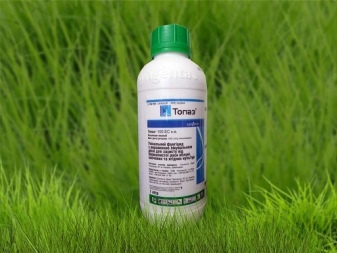
Prevention measures
To prevent rust damage to conifers, it is necessary to carry out a wide range of versatile activities.
- Planting healthy pine trees, after checking the source of purchase.
- Elimination of sick individuals.
- Separation of host cultures: intermediate, main.
- Cutting down weeds, which can also be an intermediate pass.
- Mandatory collection of dry foliage.
- Do not feed plants from mid-summer to late autumn with nitrogen fertilizers.
- Establishing a drainage system. An excellent solution would be to plant moisture-loving plants near the needles. They will eliminate stagnant water.
- The period from late May to early June becomes crucial for the spread of the dispute. At this time, trees are irrigated with a solution of a copper-containing preparation: copper oxychloride, "Abiga-Peak".
Rust on pine gradually wears out the tree, dries it out. With a large-scale defeat, the needles begin to crumble en masse. The only sure way to deal with such a mess is to identify the problem in time.
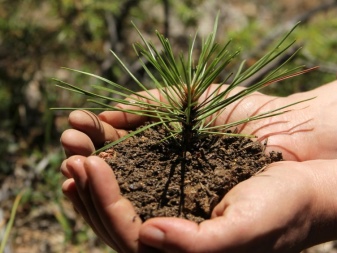
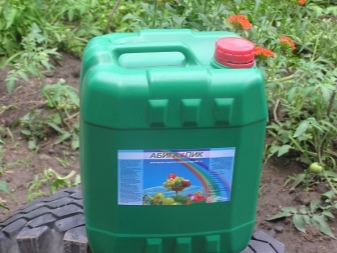
Rust damage is urgent and requires a quick, effective response.
For information on how to save pine from blistering rust, see the next video.



































































The comment was sent successfully.